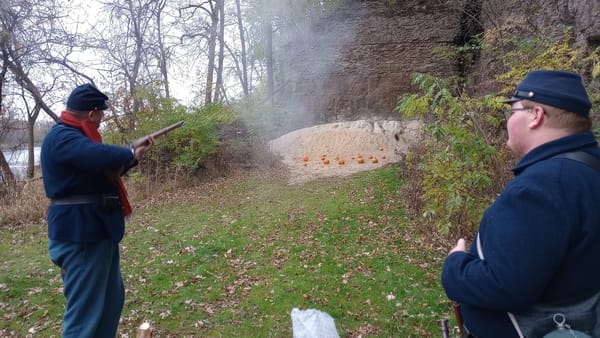Garlic mustard: it's back again
Garlic mustard takes a bite out of our landscape each spring.

Garlic mustard (Alliaria petiolata), one of Illinois's most invasive plants, is appearing once again, in a yard or flower bed near you. According to Ryan Pankau of Illinois Extension, garlic mustard releases allelopathic chemicals into the soil. That's a fancy way of saying that your favorite native wildflowers and other plants don't grow well around garlic mustard. Extension Agent Wendy Ferguson says it does well in shade, like hostas.
Local conservation groups often invite the community to help out at "garlic mustard pulls" around this time of year. Fortunately, if you grab it near the base, garlic mustard is easy to pull up by the roots, especially after a rain. Pankau says his kids love to pull it. It has a rich garlicky smell.
A single plant can produce 600-7,000 seeds - if not pulled up before it produces seeds, usually in May. Actually, it's worse than that. Says Pankau, "Interestingly, a garlic mustard plant that has been pulled from the ground can actually still produce viable seeds if flowers were present at the time of removal." Yes, interesting. Instead of mowing it, better smother it in a black trash bag. Otherwise, its allelopathic chemicals might leach into the soil.
Garlic mustard is easy to recognize in its second year by its white flowers, but since flowers make seeds and seeds make weeds, you shouldn't wait until the flowers appear. Ferguson says it's easier to deal with the first year, when it grows as a "basal rosette" without flowers, often under the snow in February. Garlic mustard is one of the first plants to come up in the spring, especially along the edges of the yard or fence, since it prefers not to be disturbed by mowing or gardening. It's a biennial, so it comes back from the roots next year, if you don't pull up the roots.
So where did this troublesome plant come from, if it's not native to Illinois? Unfortunately, our immigrant ancestors in the 1800’s brought it from Europe on purpose - because they liked to eat it. And it's so economical and plentiful! As you would guess from the name, the leaves taste like garlic and like mustard greens. In North America, no animal or bird wants to eat it. To control it, Minnesota botanists are thinking about importing its natural enemy, a small weevil, from Europe.
The Edible Wild Foods website tells you all you need to know about the benefits of garlic mustard in your diet: eating it may help you lose weight, protect your heart, lower your cholesterol, and even prevent cancer. You can find recipes online, including Garlic Mustard Horseradish, Garlic Mustard Pesto, Garlic Mustard Stuffed Mushrooms, Wild Mustard Pesto, Sesame and Wilted Green Saute, and Wild Pizza. The greens taste best the first year, before the flowers appear, but the roots and pods are also edible.
If you can't beat it, eat it.
An earlier version of this article was published on April 13, 2021, as one of our first stories.





